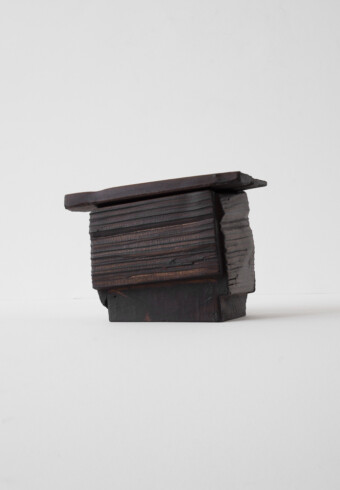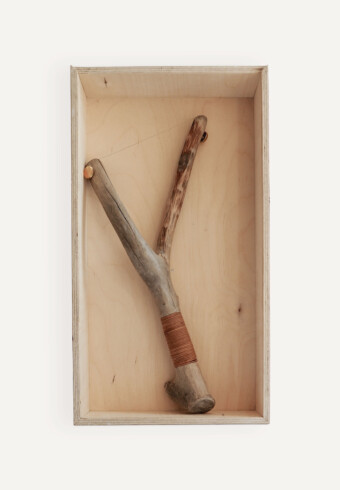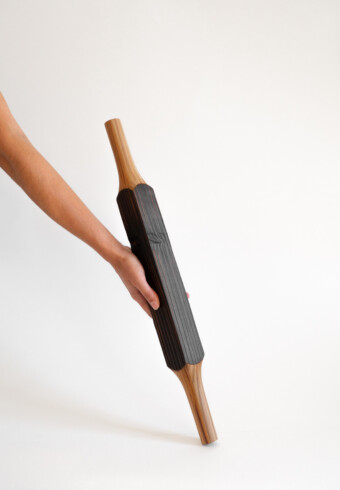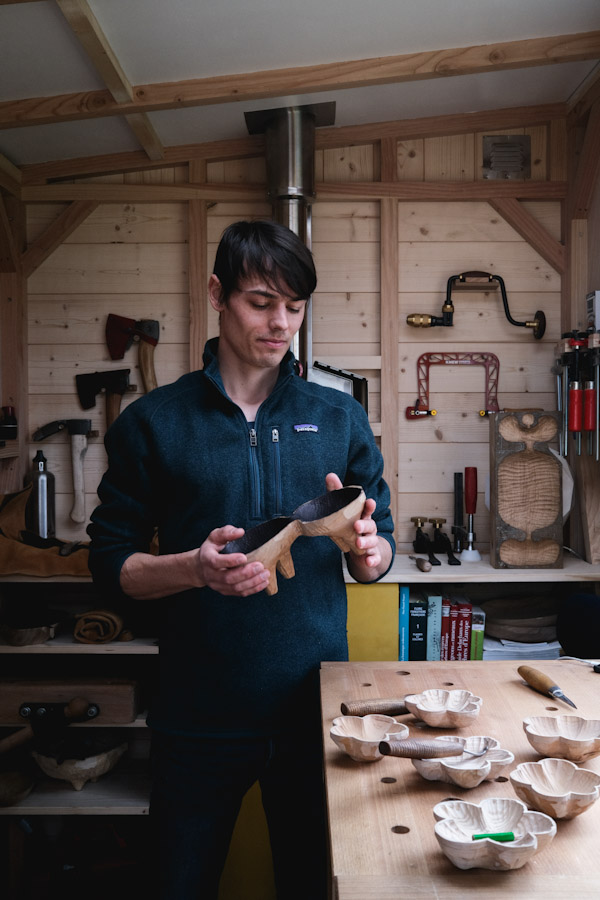
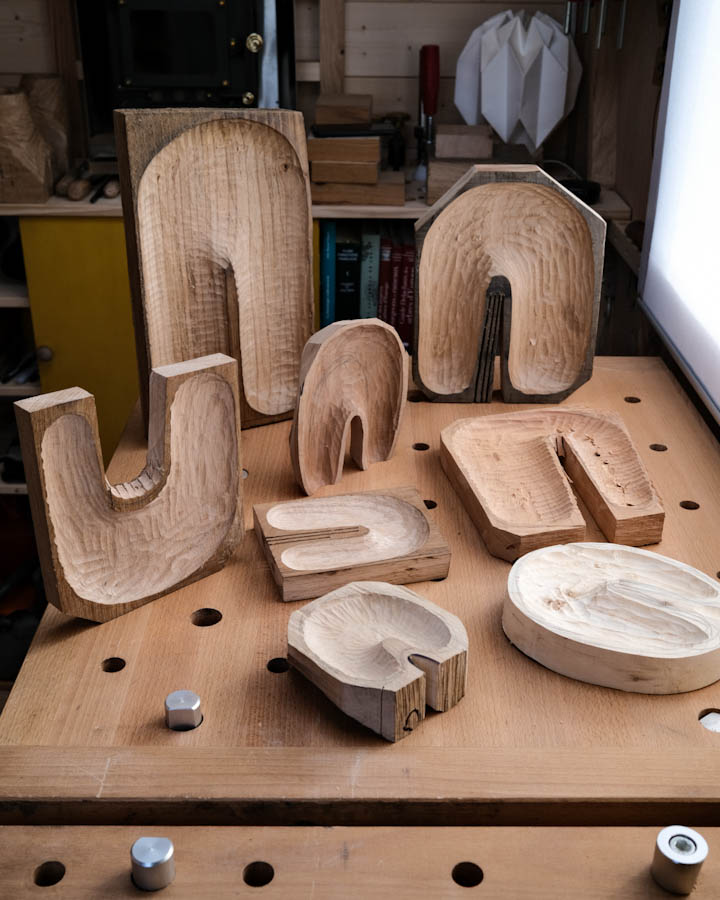
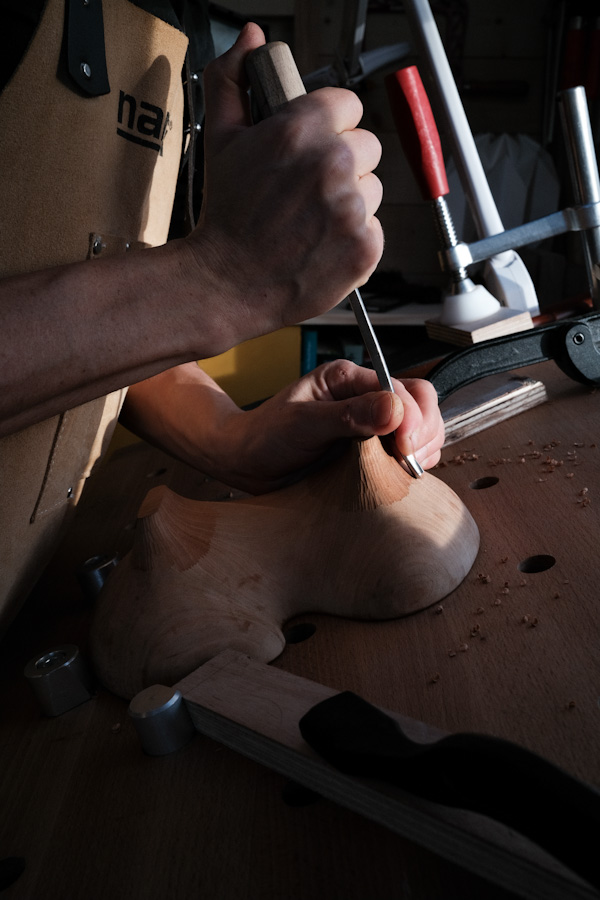
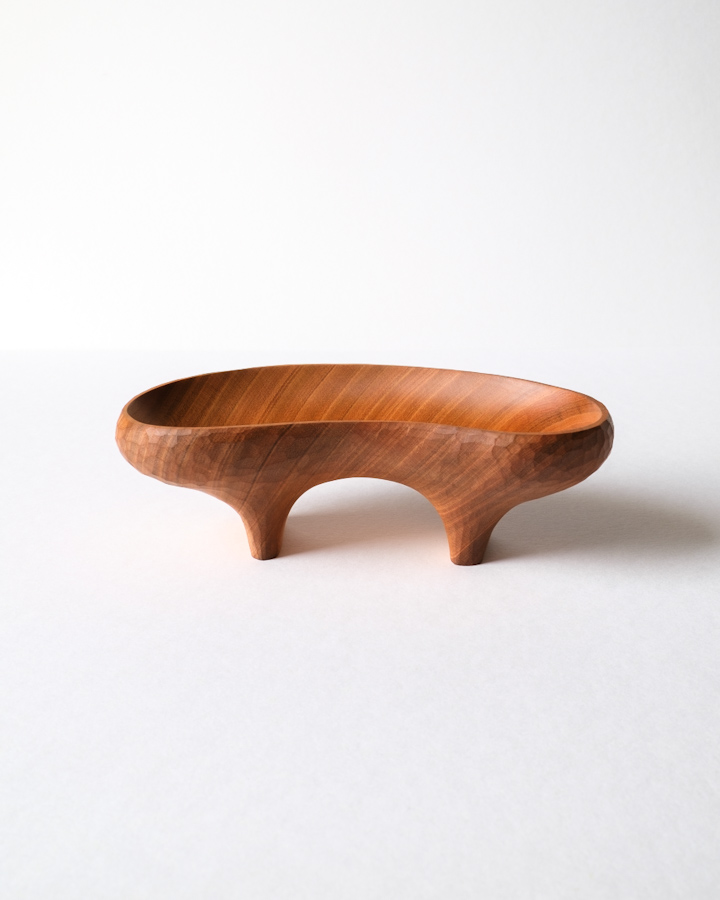
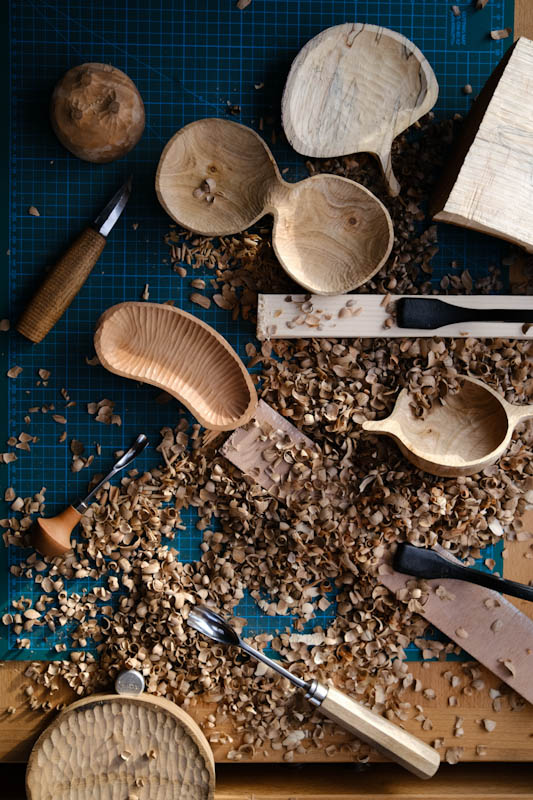
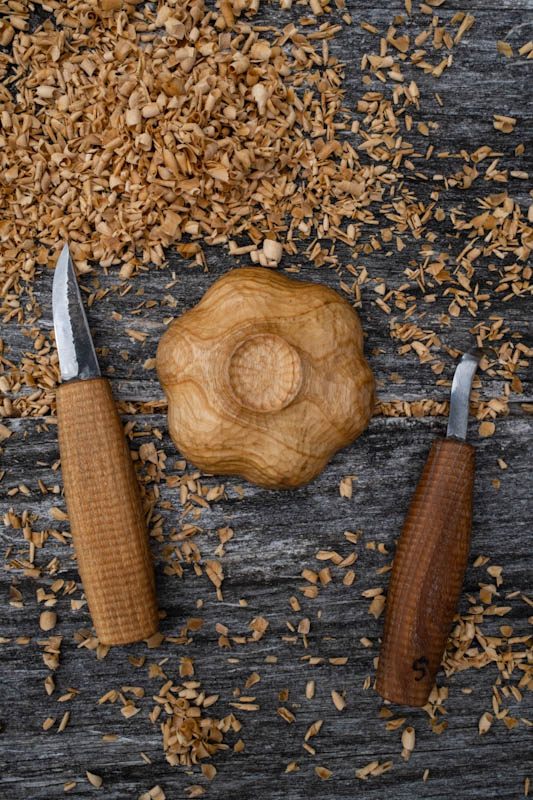
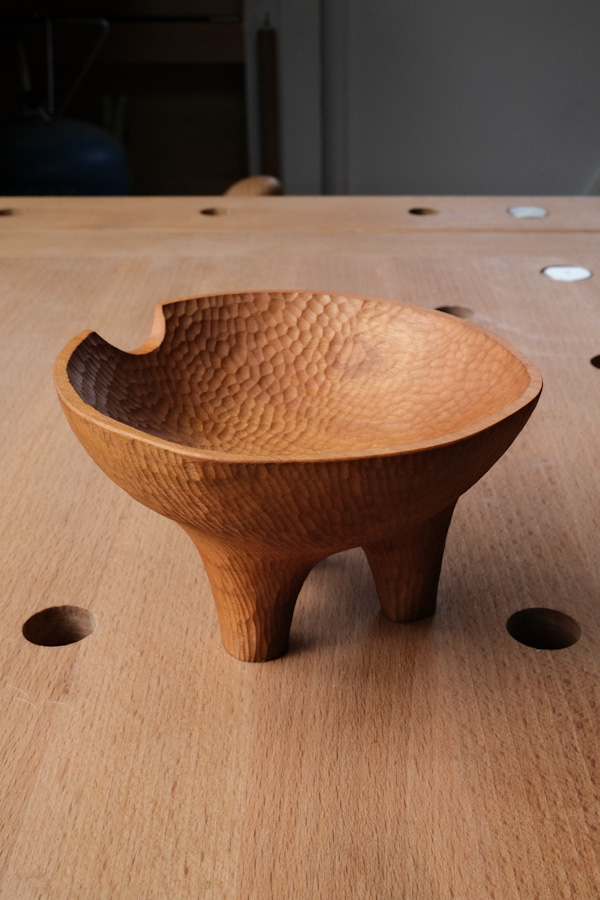
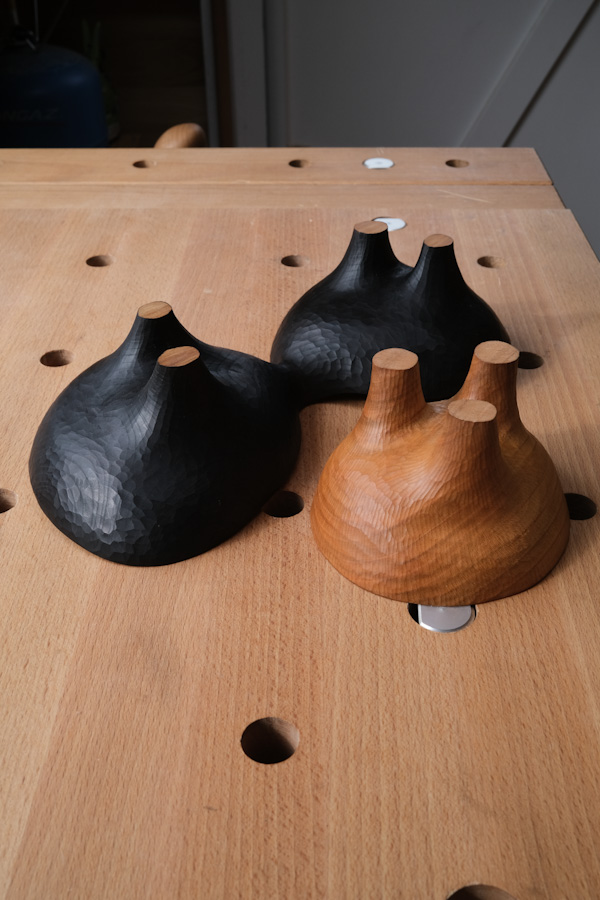
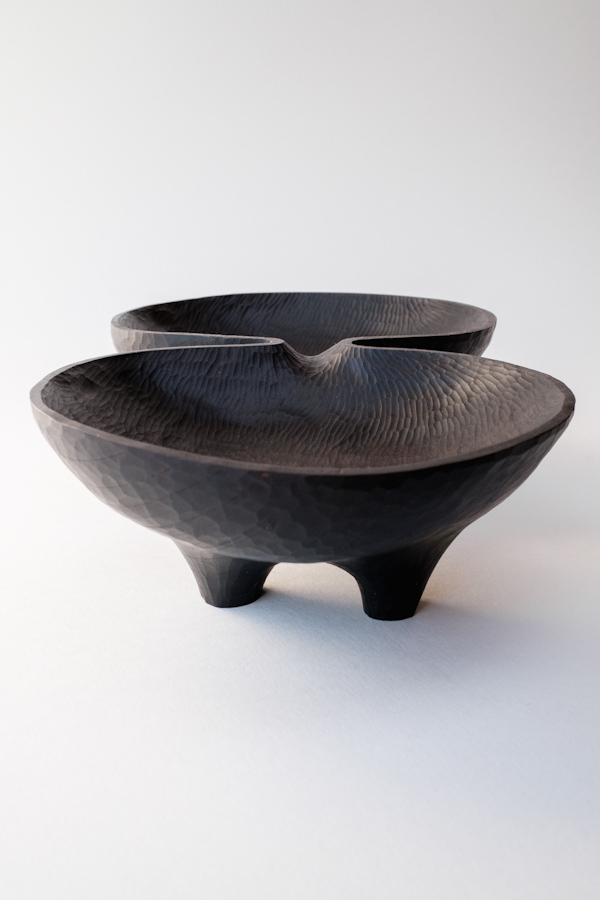
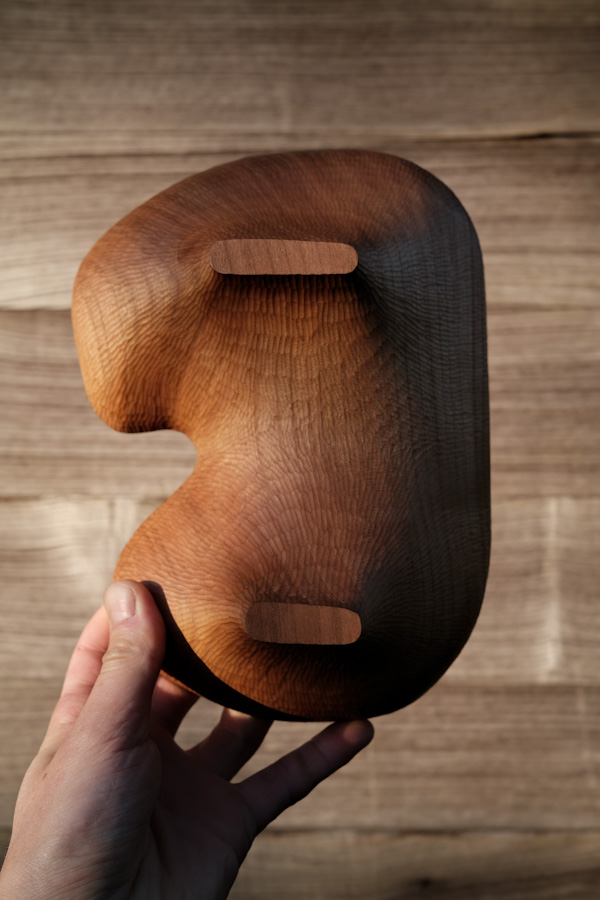
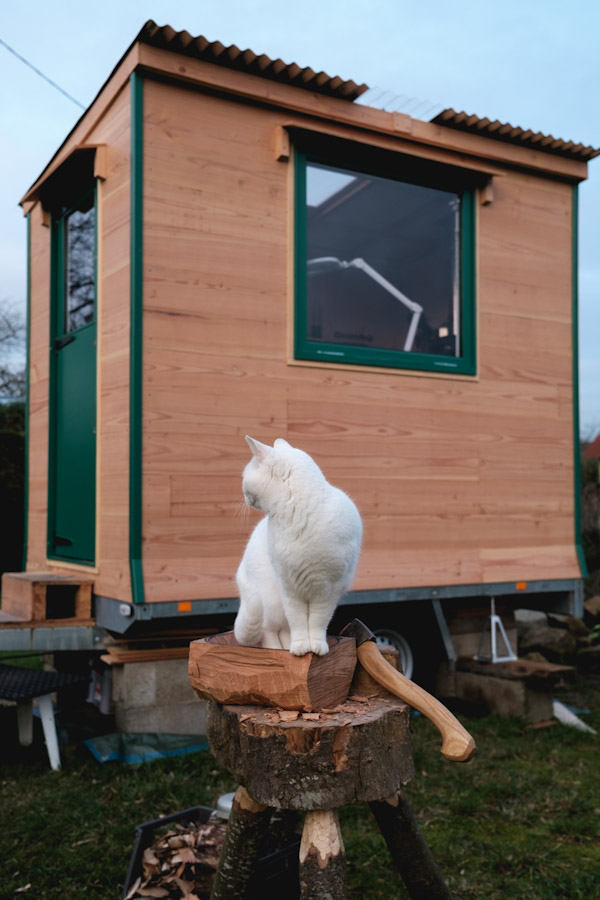
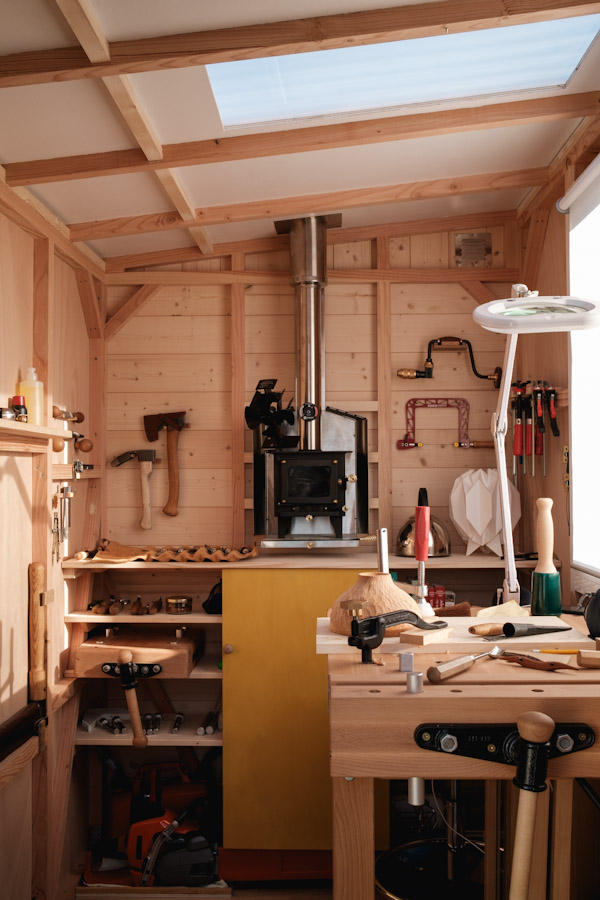
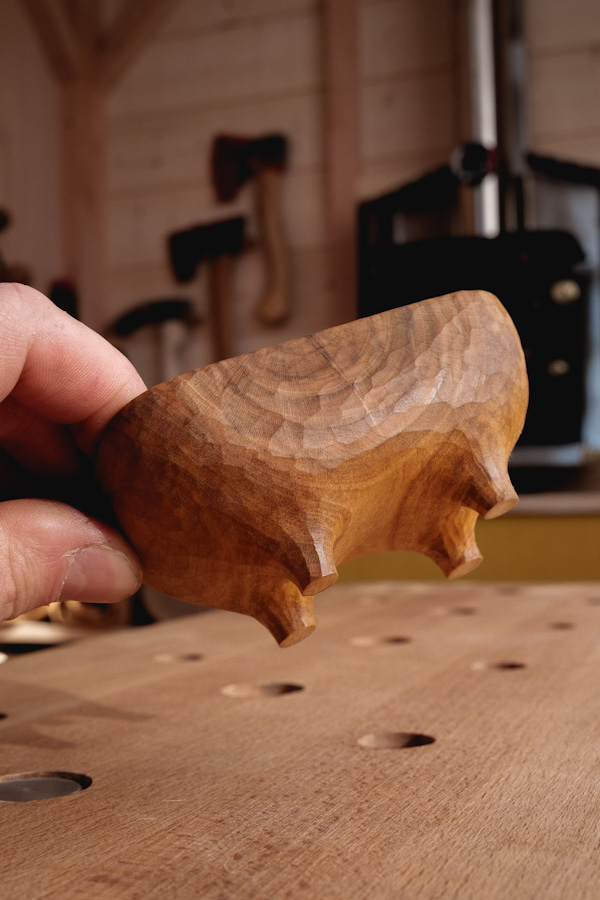
Etienne Bailleul

Etienne shapes wood in his small minimalist workshop located in Lower Normandy, in the Bay of Mont Saint-Michel. Self-taught sculptor, he offers pieces full of meaning and textures to perfectly reveal the character of each wood. Totally fascinated by the richness of the plant world, it is here that Etienne draws his inspiration to create pieces on the border between the usual and the decorative. Meet.
Where does your passion for wood come from?
I grew up in the countryside and in this sense I have always been confronted with manual labor. The relationship to matter, whether to manufacture, create, repair or work is present in my family. I imagine that woodworking is what impressed me the most, I observed a lot and I was nourished by the gestures before practicing. Beyond matter, there are living beings. My relationship with trees is quite intimate, I saw them change over the years and the seasons. I climbed the branches when I was younger, I remember their movement, this balance between flexibility and resistance, this life up there. Trees are peaceful and silent beings and in this sense I feel connected to them. I think that working with wood is a way for me to better understand them, the plant world has a lot to teach us.
Tell us about your way of working, do you exclusively sculpt your pieces?
I do not define myself as a sculptor but it is a work of sculpture yes. I am self-taught in woodworking so learning and experimentation are currently part of the creation process. It will change for certain stages but I only work with hand tools. It means going slower, being patient. It allows you to see the shape evolve, to control the gesture and to be as close as possible to the material. I also like to take a step back, sometimes I leave a room aside for weeks, it's always positive.
What type of pieces do you create?
I make objects on the border between the usual and the decorative. I prefer there to be interaction with users, I like when my creations are used, touched, looked at from all angles, that we invent unexpected uses for them. It's a playful relationship that seems richer to me than a simple object to look at, especially when we're talking about wood and “living” material. I prefer to create small and delicate, the pieces I make are rather modest in terms of size, but always with great attention to detail and finish.
Is there an essence that you like the most to work with?
I use local wood and only rustic species, it already leaves a very nice palette and it is difficult to establish a preference. I started with wood from the orchard at my parents' house. I particularly appreciate fruit woods, mainly those of apple, pear and cherry. I love the smell and the fine grain of these semi-hard woods that allow you to sculpt in detail.
What is your creative process?
I have always drawn and sometimes I do sketches but the richness of the wood means that the drawings are quickly obsolete. My sketches are currently more of the order of texture searches rather than the object as a whole. I prefer to let myself be carried away by the piece of wood, to explore. To have a very precise intention I find that it is to constrain this material which already has its own constraints, its tensions and its history. I think it is better to deal with these difficulties and let yourself be guided by the material. This is what I love about wood, it often takes me out of my comfort zone, and the result is always different. Wood is a noble material so I also try to waste as little as possible. Most of the shapes therefore result from a balance between the piece of wood and its uniqueness in relation to the intention which is gradually emerging.
The shapes of your pieces and the textural effects make your pieces very organic. What are you inspired by?
My main source of inspiration remains nature, without a doubt. More precisely, I realized that I like to pay particular attention to the materials and textures that our environments and their diversity offer us. I like to look at things closely, to try to understand the relationships that these different materials establish with each other, their relationship to light and touch. My pieces are meant to be used and this relationship to touch is becoming more and more important to me. I am also very curious about the different know-how around the world in all areas of art, crafts and design, my imagination therefore draws its sources from very extensive references and this open-mindedness is always a great help.
Can you describe your work environment to us?
Currently I work in Lower Normandy in the Bay of Mont Saint-Michel, in the countryside. When I decided to launch my activity at the end of 2020, the question of the premises arose, and I quickly set out to build it. It's a way for me to make this experience even more rewarding. It is a small minimalist workshop, a timber frame construction carried out in one month on a flatbed trailer according to the “tiny houses” principle. It remains a temporary solution but I like the efficiency and the luminosity of this space which is simply articulated around a sculptor's workbench.
Can you show us the exhibits at the event? “Bring the Trees Indoors” ?
Two oak vases were made in an old beam that comes from a farm building. They have a massive and stable base, which tapers towards the opening. As if that big beam was still there and was evolving into something lighter, the branches in the vase completing this transformation. These two vases deliberately keep some traces of this ancient life. It is always interesting and rewarding to be able to reuse wood. Among these pieces there is also a cherry wood vase. The line that runs through the object and gives it its shape appeared spontaneously by sculpting the material. I imagine that I let myself be guided by the grain and the natural twist of this piece. These vases feature a gouge-textured surface, in order to play with light and touch. It is also a way of attracting the eye, an encouragement on my part to come and observe this wonderful material more closely, produced slowly by the tree over the years.












- Location: Lower Normandy, France
- Website: https://www.instagram.com/etiennebailleul/
Share

